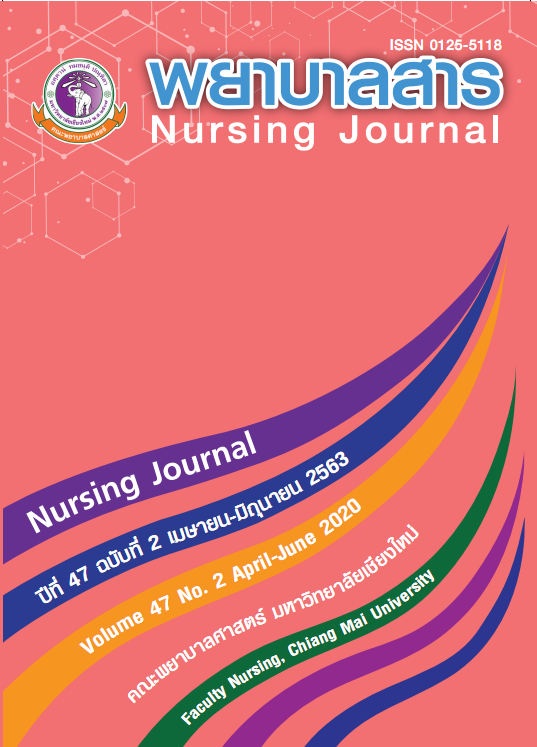Repeated offenses in narcotics cases of juvenile in Thai society 4.0 Era
Keywords:
Repeated offense, Narcotics, juvenile, Thai societyAbstract
Narcotic drugs that are approaching the epidemic in Thai society. Especially the juvenile who are like the strength and the brain of the nation. Due to the fact that Thai juvenile are using the top social media in the world, young people can easily enter into dangerous media by acknowledging that the 4.0 era is difficult to control a gap in crime and many of drug cases. It is found that most children and juvenile who have repeatedly committed drug offenses have behavior that is not afraid of legal punishment. Therefore, it creates networks and groups using online media as a means to cause trouble in society. Committed violent crime, which has so much impact on the nation that will lose manpower and budget to prevent and solve these problems. The juvenile who commit crimes related to substance abuse, which lacks love and care of family. Acceptance in society youth will be isolated and locked themselves in the online world, which is easier to cause provocations recidivism for drug dealing and drug groups. Therefore, finding ways to prevent and resolve the situation. all stakeholders need to work together to plan practical measures. It gives young people a great potential to be an important human resource in the development of a sustainable nation.
References
Aphiwut, N. (2017). The Measure of Punishment in Case of Recidivism of Juvenile Del inquent in Drug Trafficking (Master’s thesis, Sripatum University). (In Thai)
Boonchai, N., Boonma B., Phutthiphong T., Rattiya T., Chirangkun K., & Nantarangsi K. (2004).Development of juvenile care systems in juvenile observation an d protection centers: Situation analysis. Bangkok: Health Systems Research Institute (HSRI). (In thai)
Center for Drug Prevention and Suppression of the Department o f Mental Health. (2016). Statistics of treatment and system reporting. Retrieved from www.nccd.go.th. (In Thai)
Chawalit, K. (2015). Factor Influences Narcotic Addition in Fem ale Student, Kalasin Province.Phetchabun Rajabhat Journal, 17(1), 54-62. (In Thai)
Decha, S. (2012). Children and Influence of Family. Journal of Law 3, 12-17. (In Thai)
Department of Juvenile Observation and Protection. (2014). Annual Report 2014: Case Statistics.Bangkok: Information Technology Center Department of Juvenile Observation and Protection. (In Thai)
Department of Juvenile Observation and Protection. (2018). Departments and locations. Retrieved from http://www2.djop.moj.go.th/location/office?start=75 (In Thai)
Department of Juvenile Observation and Protection. (2016). The offense of drug-related offense that has been prosecuted by juvenile observation and protection centers nationwide Classified by drug type. Retrieved from http://social.nesdb.go.th/SocialStat/StatReport_FullScreen.aspx?reportid=106&template=1R2C&yeartype=M&subcatid=45 (In Thai)
Department of Health. (2018). Toxic effects of cybutamines. Retrieved from https://www.thaihealth.or.th/Content/43548.html. (In Thai)
Edwin, H. S. (1985). White Collar Crime: The Uncut Version. London: Yale University Press.
Food and Drug Administration. (2017). FDA recommends parents closely monitor their children after Finding youth ordering drugs through the media. Retrieved from https://db.oryor.com/Databank/data/news/brochurenews.
Information Technology Center of Department of Juvenile Observation and Protection. (2015).Report of juvenile delinquents who have returned to the probati on center for recidivism in drug-related cases. Retrieved from http://www.djop.go.th/Djop/main.php? page=UserNews&created_by=81 (In Thai)
Internet foundation of Child Online Protection Action Thailand (COPAT). (2019). A Survey of Situation of Online Media Use and Child Hazard of Year 2019. Retrieved from https://inetfoundation.or.th/Welcome/showmedia?id=138 (In Thai)
Kanchana, K. (2012). The development of a recidivism prevention on drug users model: a casestudy of the juvenile observation and protection department (Doctoral dissertation, Silpakorn University). (In Thai)
Kesawarang, C. (2018). Abstract: Factors influencing the recidivism of children and youth living inWhile being probationed in Central Observation and Protection C enter. Retrieved from https://madlab.cpe.ku.ac.th/TR2/?itemID= 473437. (In Thai)
Kohlberg, L. (1976). “Moral Stages and Moralization”; The Cognitive Development Appr oach, inMoral Development and Behavior: theory. New York: Holt Rinehart and Winston.
Nation New Bureau of Thailand. (2019). Special report: The situation of drug epidemic, drug market, policy for reducing the harm caused by drug. Retrieved from https://thainews.prd.go.th/th/news/detail/TCATG190924183508847 (In Thai)
Narumol, M., & Weeraporn, S. (2018). The Effectiveness of the Life Skill Promoting Program and Family Participation on Life Skills Development and Intention t o Quit Using Illicit Drug Among Juvenile Under Supervision by the Venue of Youth Observation and Protection. Nursing Journal, 45 (2), 88-98. (In Thai)
Office of the Narcotics Control Board. (2019). Prevention action plan Suppress and treat drug abuse in 2019. Retrieved from https://www.oncb.go.th/Home/PublishingImages/Pag es/ProgramsandActivities.pdf. (In Thai)
Pimpisa, C., Apinun, A., Penprapa S., & Samran, K. (2017). Prevalence of Substance Used, and Association between Substances Used with Sensation Seeking amon g Vocational Students. Nursing Journal, 44 (2), 173-181. (In Thai)
United Nations General Assembly Special Session. (2016). The UN General Assembly Special Session on Drugs. Retrieved from https://idpc.net/policy-advocacy/the-un-general-assembly-special-session-on-drugs-ungass-2016
Tawan, C. (2014). Factors Influencing the Recidivism of Youth in order to find ways to developyouth after release. Journal of Pathum Thani University, 34 (6). (In Thai)
Yanischa, S. (2016). Causes and behaviors of juvenile delinquency: A case study of causes andbehaviors of offenders (SKOI). (Master’s thesis, Rangsit University). (In Thai)
Downloads
Published
How to Cite
Issue
Section
License
บทความที่ได้รับการตีพิมพ์เป็นลิขสิทธิ์ของวารสารพยาบาลสาร
ข้อความที่ปรากฏในบทความแต่ละเรื่องในวารสารวิชาการเล่มนี้เป็นความคิดเห็นส่วนตัวของผู้เขียนแต่ละท่านไม่เกี่ยวข้องกับมหาวิทยาลัยเชียงใหม่ และคณาจารย์ท่านอื่นๆในมหาวิทยาลัยฯ แต่อย่างใด ความรับผิดชอบองค์ประกอบทั้งหมดของบทความแต่ละเรื่องเป็นของผู้เขียนแต่ละท่าน หากมีความผิดพลาดใด ๆ ผู้เขียนแต่ละท่านจะรับผิดชอบบทความของตนเองแต่ผู้เดียว






